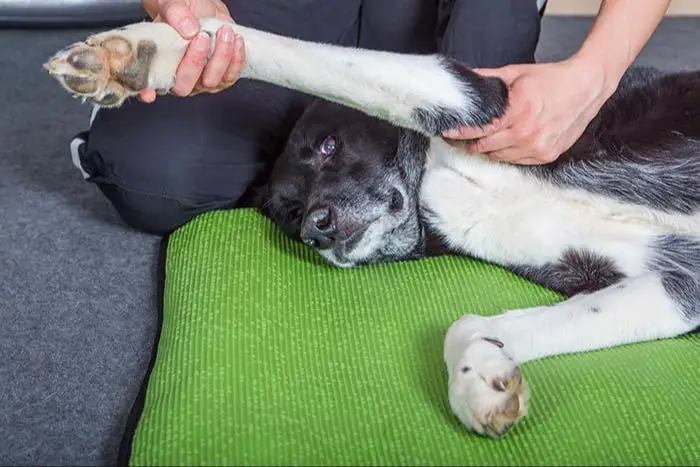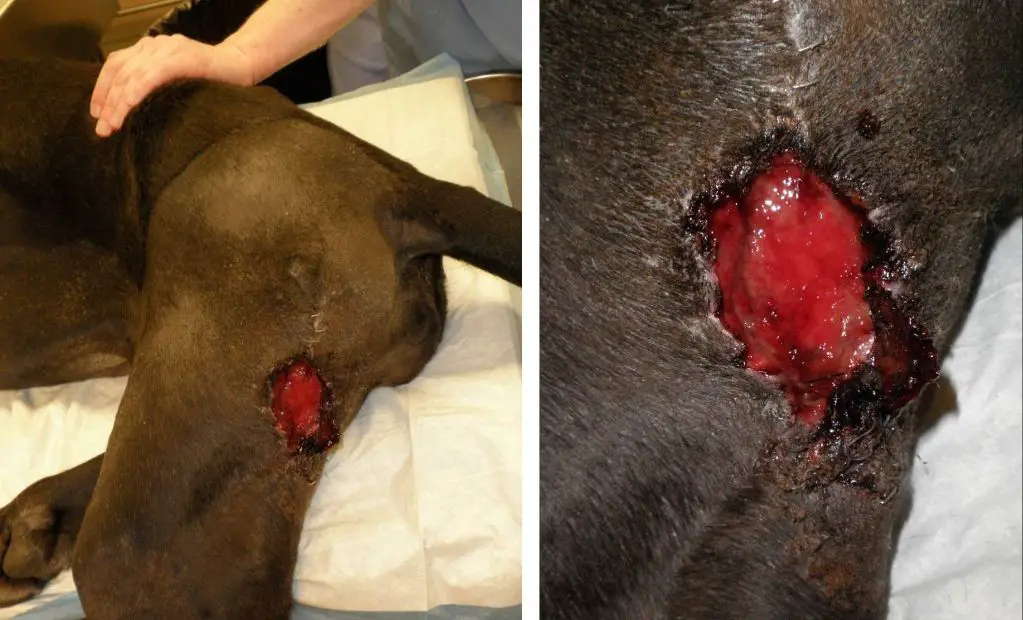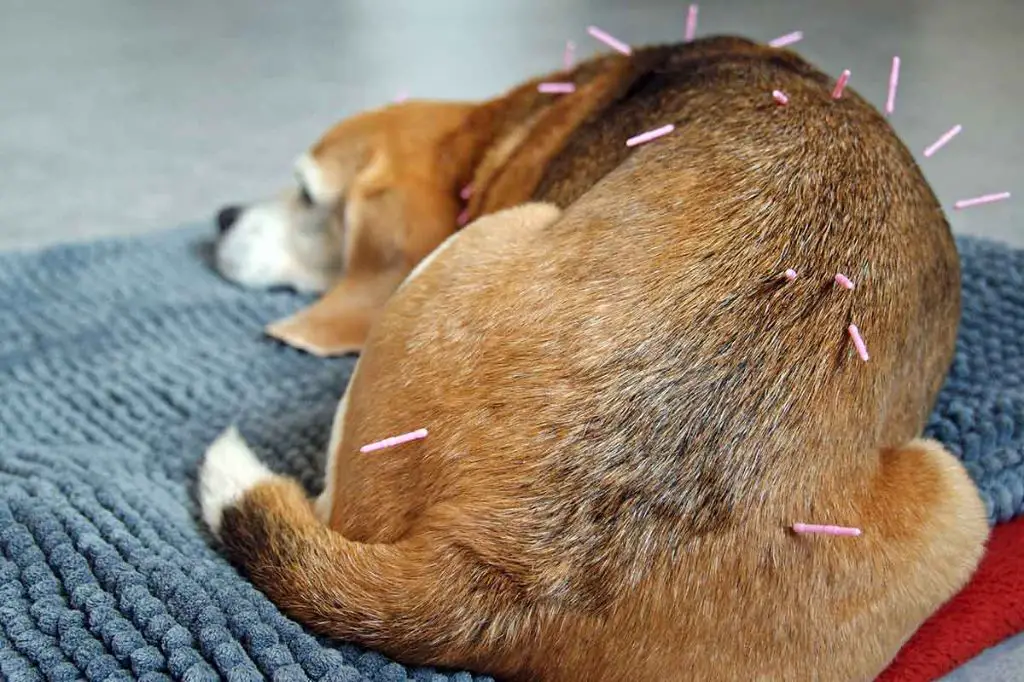Introduction
Canine hip dysplasia (CHD) is a common orthopedic condition that affects many dogs, especially larger breeds. CHD is caused by abnormal development of the hip joint, leading to joint laxity, arthritis, and eventual loss of function. This painful condition can severely impact a dog’s mobility and quality of life.
While there is no cure for CHD, various treatment options aim to minimize pain and improve joint health. Along with medications, physical therapy, and sometimes surgery, gently massaging a dog’s hips may provide multiple benefits.
A regular routine of careful massage can potentially help relieve muscle tension, increase range of motion, improve circulation, and stimulate the release of endorphins for natural pain relief. When combined with veterinary care and prescribed treatment plans, massage may be a helpful complementary therapy to help manage CHD in dogs.
What is Canine Hip Dysplasia?
Canine hip dysplasia (CHD) is a common orthopedic condition that affects a dog’s hip joints. It occurs when the hip joint does not develop properly, causing instability, arthritis, and even lameness.
CHD is caused by abnormal development of the hip joint. The ball at the top of the femur does not fit securely into the socket of the hip bone, causing excessive wear and tear, inflammation, and pain. Eventually, arthritis develops as the bones rub against each other.
Some common symptoms of CHD include:
- Difficulty standing up or lying down
- Lameness in the hind legs
- Bunny hopping gait
- Narrow stance in the hind legs
- Loss of muscle mass in the hind legs
- Reduced activity and mobility
Certain factors can increase a dog’s risk of developing CHD, including:
- Genetics – it tends to run in certain breeds like German Shepherds, Labradors, and Golden Retrievers
- Rapid growth – fast bone development can contribute to joint laxity
- Nutrition – overnutrition in puppyhood may accelerate growth
- Exercise – too much high-impact exercise at a young age
- Obesity – excess weight puts more strain on joints
How Massage May Help
Massaging a dog’s hips and hind legs can provide several potential benefits for canines with hip dysplasia. The gentle hands-on manipulation helps relax the muscles and improve flexibility in the hip and thigh areas. Massage therapy increases blood circulation to the affected tissues, bringing fresh oxygen and nutrients to promote healing. The light rhythmic pressure also releases endorphins, natural pain-relieving chemicals in the body. As the muscles relax through massage, the range of motion in the joints improves, enabling the dog to move with less pain and stiffness. The increased joint mobility allows the dog to more easily perform physical activities like standing, walking, running, and climbing stairs. Massage serves as a complement to other hip dysplasia treatments in reducing inflammation, managing pain levels, and improving a dog’s comfort and quality of life.
Massage Techniques
Certain massage techniques may help relieve pain and increase mobility in dogs with canine hip dysplasia. Here are some of the most commonly recommended techniques:
Gentle Circular Motions: Using your fingers and palms, gently massage in circular motions over the hip and thigh muscles. This can help relax tight muscles and stimulate blood flow to the area. Start lightly and increase pressure as your dog seems comfortable.

Stretching: Gently grasp the leg just above the paw and slowly and carefully extend the leg back, holding for up to 30 seconds. Repeat 2-3 times per leg to provide a mild stretch to the hips. Make sure not to overextend the joints.
Passive Range of Motion Exercises: Support your dog’s back end and slowly bend and extend each leg through its range of motion. Go slowly and stop if you feel resistance or your dog seems uncomfortable. This can help maintain flexibility and joint health.
Always start slowly, stop if your dog seems in pain, and avoid overextending the joints. Massage should never cause further injury. Consult your vet for guidance on safe techniques for your dog’s specific condition.
When to Avoid Massage

While massage therapy can provide many benefits for dogs with canine hip dysplasia, there are some situations where it should be avoided. In particular, you should not massage a dog’s hips if there are open wounds, the dog has just had surgery, or is experiencing severe pain.
Open wounds provide an entry point for infection. Massaging near open sores or incisions can push bacteria deeper into the tissue, leading to further infection. It’s best to allow any wounds to fully heal before massaging around them.
Massage should also be avoided immediately after a dog has undergone surgery. Vets typically recommend waiting at least 2 weeks after surgery before massaging the area to allow proper healing. Immediately after surgery, the incision site will be inflamed and fragile. Massage could disrupt the surgical site leading to poor healing.
Finally, if a dog is exhibiting signs of severe pain such as crying, whimpering, or aggression when touched, massage should not be attempted. Massage may exacerbate the pain and stress for a dog already in distress. In these cases, consult a vet to find appropriate pain management options first before attempting massage therapy.
Complementary Therapies
In addition to massage, there are some other complementary therapies that may help dogs with canine hip dysplasia.

Acupuncture involves inserting very thin needles into specific points on the body to stimulate nerves, muscles and connective tissue. This can help reduce inflammation, pain and improve mobility in dogs with CHD. Make sure to find an experienced veterinary acupuncturist.
Low-impact exercise like swimming and walking on soft surfaces can help strengthen muscles and increase joint flexibility without putting extra stress on the hips. Maintaining a healthy weight is also important, as excess weight puts more pressure on the hip joints.
While complementary treatments like these may provide some relief, they should not replace conventional veterinary care and monitoring. Work closely with your vet to determine the best mix of therapies for your dog’s CHD.
Seeking Veterinary Care
If your dog shows signs of canine hip dysplasia or you suspect it may be developing, it is important to schedule a veterinary exam. Your vet will perform a physical exam of your dog’s hips and may order x-rays to evaluate the health of the joints.
Based on the exam and x-ray findings, your vet may recommend treatment options like non-steroidal anti-inflammatory drugs (NSAIDs) to help control pain and inflammation. In more severe cases of CHD, surgery may be advised to correct joint abnormalities and improve your dog’s quality of life. Some surgical options include:
- Triple pelvic osteotomy (TPO) – reshaping the hip socket to provide better coverage of the femoral head
- Femoral head ostectomy (FHO) – removing the femoral head and allowing a false joint to form
- Total hip replacement – replacing the hip joint with an artificial implant
Your veterinarian can help determine the best treatment approach based on your dog’s specific case, age, and needs. Be sure to discuss all the options as well as post-operative rehabilitation recommendations.
Caring for a Dog with CHD
Caring for a dog with canine hip dysplasia requires making some adjustments to support their comfort and mobility. Here are some tips:
Provide ramps and mobility support
Look for pet ramps to help your dog get on and off furniture more easily. Ramps can reduce the stress on their joints. You can find ramps for beds, cars, and stairs. Help your dog stand up by using a towel under their belly for support.

Keep nails trimmed
Trim your dog’s nails regularly to prevent snagging and tripping which could injure their hips. Long nails alter their gait and put more strain on their joints.
Monitor for pain
Check in frequently with your vet about pain management. Signs your dog is in pain include decreased activity, trouble standing up or lying down, limping, and yelping when touched. Keeping your dog comfortable will give them the best quality of life.
Outlook
While canine hip dysplasia can be a challenging condition, the outlook for dogs diagnosed early and receiving proper treatment is good. With appropriate management, dogs with hip dysplasia can enjoy a decent quality of life into maturity. While CHD cannot be cured completely, proper exercise, maintaining a healthy weight, medication, supplements, therapy, and sometimes surgery can help minimize pain and delay the progression of arthritis.
Early detection and treatment are key to optimizing outcomes. Catching CHD in the first year of a dog’s life provides more options for reducing joint laxity before osteoarthritis sets in. Various treatment options can help strengthen muscles, stabilize joints, reduce inflammation and pain. This comprehensive approach helps take pressure off damaged hip joints to improve mobility and comfort.
While challenging, CHD is a very manageable condition. With attentive care and treatment, dogs can adapt well and enjoy many good years as beloved family members. Staying active, maintaining a healthy weight, proper pain management and therapy can help dogs with hip dysplasia live an enjoyable, fulfilling life.
Summary
The role of massage in treating canine hip dysplasia is to provide temporary pain relief and increase range of motion. Massage should never be used as a replacement for conventional veterinary treatment, but it can be an effective complement. Gentle techniques like compressions and stroking can help relax muscles and stimulate blood flow. More intense methods like passive joint flexions and compressions can improve joint mobility. While executed properly and under guidance, massage therapy is generally safe for dogs with hip dysplasia. Owners should watch for signs of discomfort and avoid massaging dogs in severe pain or after surgery. By relieving muscle tension, easing stiffness, and supporting conventional treatments, massage can improve comfort and quality of life for dogs with hip dysplasia.